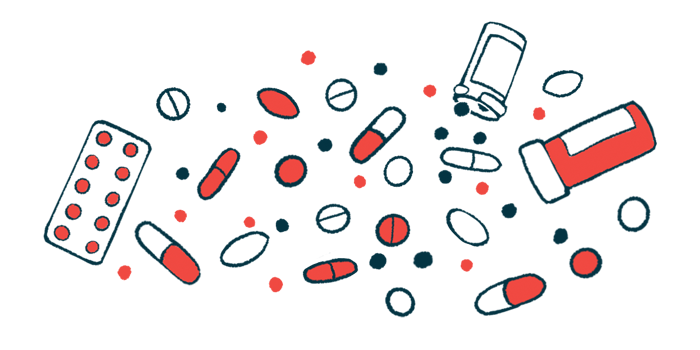Newer antiseizure medications show effectiveness in review study
Add-on therapies reduced seizure frequency at least 50% in Dravet children

Newer antiseizure medications for children and adolescents with Dravet syndrome outperformed placebos and reduced seizure frequency by at least 50% in clinical trials, according to a pooled analysis of study data.
The review also compared the benefits and safety of such therapies, each of which is approved in the U.S. for patients ages 2 and older.
Diacomit (stiripentol) was associated with a 100% reduction in seizure frequency compared with the placebo, while Epidiolex (cannabidiol) was linked to a lower rate of adverse events than Diacomit and Fintepla (fenfluramine).
These findings provide “first-class evidence that documents the efficacy and tolerability” of these three antiseizure medications in Dravet patients, and “allows discussion about the expected outcomes regarding seizure frequency reduction and tolerability profiles,” according to the researchers.
The study, “Pharmacotherapy for Dravet Syndrome: A Systematic Review and Network Meta-Analysis of Randomized Controlled Trials,” was published in the journal Drugs.
Efficacy of add-on therapies reviewed in 680 children
Dravet syndrome is a severe epileptic brain disease in which symptoms typically emerge in the first year of life. It is characterized by hard-to-treat, lifelong seizures, alongside intellectual disability, behavior disturbances, sleep disorders, and walking problems.
With the approval of new antiseizure medications — dubbed ASMs — in recent years, the management of Dravet-related seizures has changed.
To better understand the overall impact of these changes, a team led by researchers in Italy pooled available evidence to evaluate the efficacy and tolerability of these newer ASMs.
A database search revealed eight placebo-controlled trials that included 680 pediatric participants. Of these, 409 were randomly assigned an active add-on treatment, while 271 received a placebo. Add-on treatments included Diacomit, Epidiolex, Fintepla, and the experimental therapy soticlestat.
Efficacy was determined by the proportion of patients who achieved a 50% or greater reduction in seizure frequency, known as seizure response, and those who achieved a 100% reduction, or seizure freedom.
According to a pairwise meta-analysis, in which pooled studies compared the same two therapies, all add-on medications outperformed the placebo in achieving seizure response. Diacomit was associated with the highest rate of seizure freedom compared with the placebo.
In a network meta-analysis, in which each study compared two or more different medications, Epidiolex was linked to an 80% lower relative rate of seizure response compared with Fintepla. Similarly, Diacomit was tied to a seizure response rate that was 14 times higher than that of Epidiolex.
Diacomit was the only drug associated with seizure freedom relative to the placebo, according to the study’s findings.
Medications tied to higher rates of seizure response, adverse effects
Regarding tolerability, the pairwise meta-analyses showed that Epidiolex was linked to higher rates of discontinuation for any reason and adverse events (AEs) than the placebo. Likewise, Fintepla and Diacomit had a higher rate of AEs than the placebo.
In the network meta-analysis, Epidiolex was associated with a 3.5 times higher rate of treatment discontinuation for any reason and a 5.2 times higher rate of AEs compared with the placebo. The risk of experiencing AEs was 7.4 times higher with Fintepla and 121 times higher with Diacomit than with the placebo.
There was a 92% lower probability of drug discontinuation for any reason with Diacomit than with Epidiolex. Still, Epidiolex was associated with a lower percentage of patients reporting any AE than Fintepla and Diacomit.
Across five clinical trials that reported data on patients who had any improvement, Epidiolex and Fintepla were associated with higher improvement rates when compared with the placebo. Those assessments came from the use of the caregiver-reported Clinical Global Impression of Change (C-CGIC).
A secondary analysis examined five studies with a maintenance period of at least 12 weeks, or about three months. Epidiolex, Fintepla, and soticlestat were associated with higher rates of seizure response compared with the placebo. Patients who received Epidiolex were 80% less likely to achieve seizure response than those who took Fintepla. No differences regarding seizure freedom were found between medications.
Epidiolex was associated with a four times higher risk of discontinuation for any reason and a 7.5 times higher risk of AEs than the placebo. Fintepla was linked to a 7.4 times higher risk of AEs than the placebo, while Epidiolex showed a 75% lower risk of AEs than Fintepla. No differences were observed regarding serious AEs and the different medications.
Lastly, Epidiolex or Fintepla had the highest rates of improvement compared with the placebo, according to C-CGIC assessments.
“There is high-quality evidence that documents the efficacy and tolerability profiles of [Diacomit], [Epidiolex], [Fintepla], or soticlestat in people with [Dravet],” the researchers wrote.
The data gathered in this study will allow healthcare providers “to have reliable data and discuss with the caregivers of people with [Dravet syndrome] about the expected outcomes” of these medications, the team wrote.









